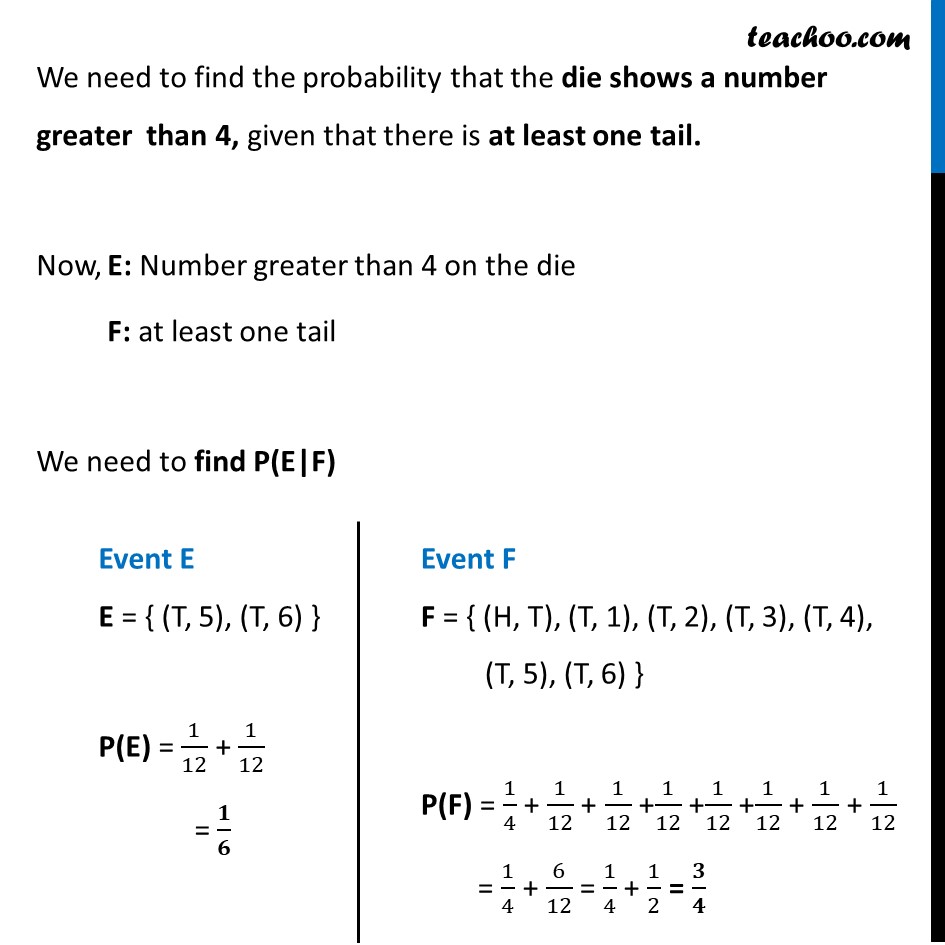


Examples
Last updated at Dec. 16, 2024 by Teachoo



Transcript
Example 7 Consider the experiment of tossing a coin. If the coin shows head, toss it again but if it shows tail, then throw a die. Find the conditional probability of the event that ‘the die shows a number greater than 4’ given that ‘there is at least one tail’.sLet’s Make a Tree Diagram We need to find the probability that the die shows a number greater than 4, given that there is at least one tail. Now, E: Number greater than 4 on the die F: at least one tail We need to find P(E|F) Event E E = { (T, 5), (T, 6) } P(E) = 1/12 + 1/12 = 𝟏/𝟔 Event F F = { (H, T), (T, 1), (T, 2), (T, 3), (T, 4), (T, 5), (T, 6) } P(F) = 1/4 + 1/12 + 1/12 +1/12 +1/12 +1/12 + 1/12 + 1/12 = 1/4 + 6/12 = 1/4 + 1/2 = 𝟑/𝟒 Also, E ∩ F = {(T, 5), (T, 6)} P(E ∩ F) = 1/12 + 1/12 = 2/12 = 𝟏/𝟔 Now, P(E|F) = (𝑃(𝐸 ∩ 𝐹))/(𝑃(𝐹)) = (1/6)/(3/4) = 1/6 × 4/3 = 𝟐/𝟗